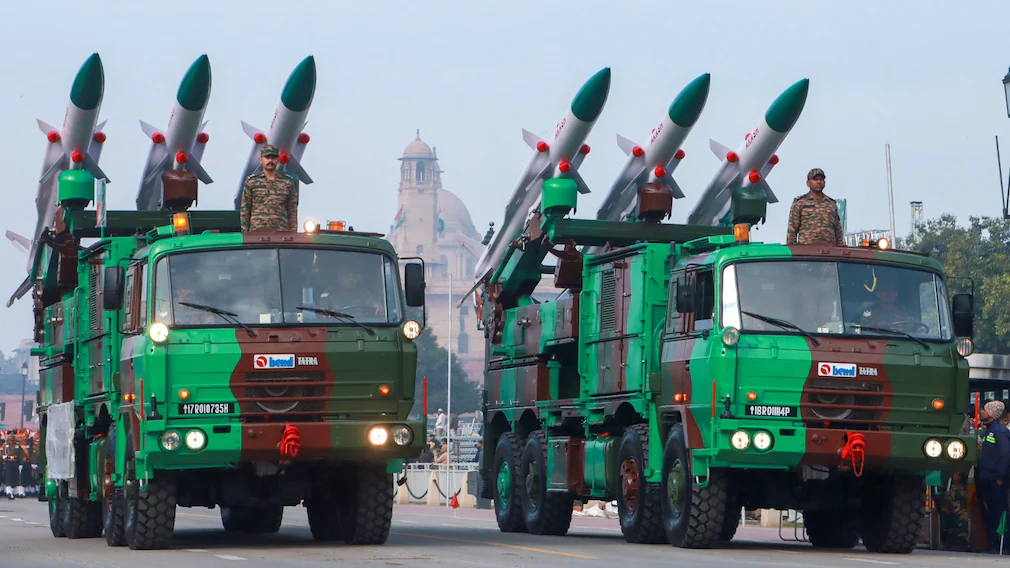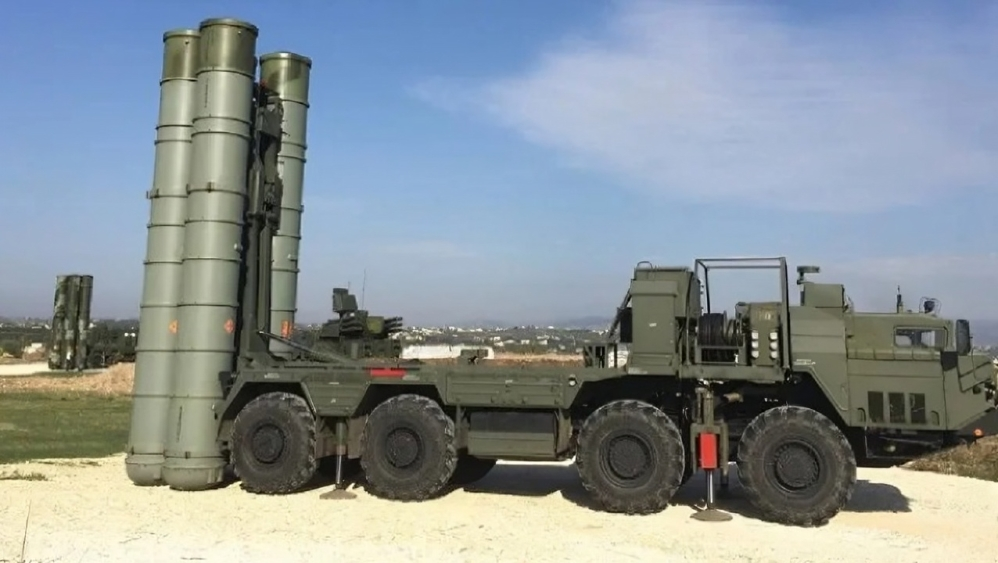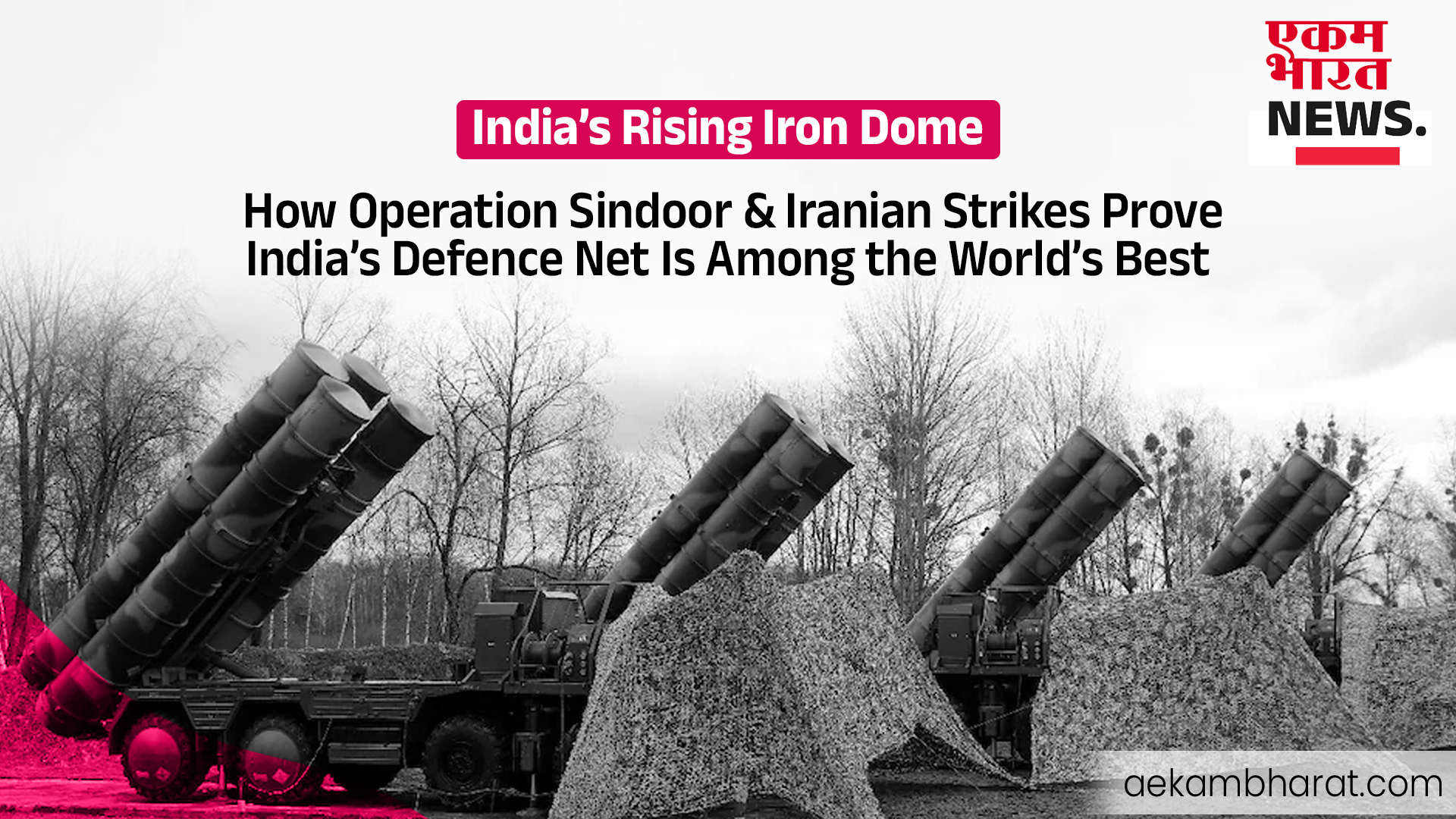As missiles rained down over Israel in the largest attack in its modern history, and drones continued to play havoc over Ukrainian skies in a war of attrition, one thing became clear — the 21st-century battlefield belongs to those who dominate the air and intercept the unseen.
While much of the world looked to U.S. Patriot systems, Israel’s Iron Dome, and Russia’s S-400, India silently built something smarter, faster, cheaper — and now, arguably superior.
Operation Sindoor & the Proving Ground
India’s recent Operation Sindoor, a covert offensive that neutralized Pakistan-backed jihad shelters, was reportedly followed by a major attempted retaliation using drones, missiles, and proxy cyber-attacks. But according to internal reports, India’s Integrated Air Defence System (IADS) handled over 600 incoming threats — and neutralized 99%, many using indigenous tech like Akash SAMs, radar-controlled interceptors, and AI-assisted battlefield radar.

The Indian Air Defence Architecture: Smart, Layered & Decentralized
India’s evolving IADS is no longer dependent on foreign solutions. It now consists of:
- Akash-Teer Integrated Air Defence System
A comprehensive command and control network for surveillance, tracking, and interception.
Coordinates radars (both imported and DRDO-developed), early-warning aircraft, and ground missile batteries.
Built under tight budget constraints, yet managed a real-time interception of 64 simultaneous aerial threats in a single theatre, as per DRDO insiders.
- Akash Missile System (Mark 1 & 2)
Developed by DRDO with BEL and BDL.
Tracks and destroys enemy aircraft and drones within 30–70 km.
Recent upgrades enable electronic warfare resilience and AI-aided targeting.
- Kusha and Kusha-M Projects
Under Project Kusha, India is developing interceptor missiles capable of targeting hypersonic weapons and MIRVs (Multiple Independently targetable Reentry Vehicles).
These are India’s equivalent to the U.S. THAAD and Israeli Arrow-3 systems, but at 1/10th the cost.
- Project ADITI (AI-based Defence Intelligence & Targeting Interface)
A classified AI framework running simulations of enemy attack patterns using ISR (Intelligence, Surveillance, Reconnaissance) feeds in real-time.
Assists in auto-prioritization of threats, and optimizes interceptor missile launches.
Comparison with Other Defence Systems in Live Combat
Feature/Scenario India (Akash-Teer / Kusha) Israel (Iron Dome / Arrow) U.S. (Patriot / THAAD) Russia (S-400 / S-500)
Missile Cost ₹30-50 lakh ($35,000-$60,000) $100,000–$150,000 $2–5 million $1–2 million
Targets Tracked Simultaneously Up to 64 (DRDO trials) 20–40 30–36 80–100
Real-World Interception Rate ~99% (Sindoor Retaliation) ~85–90% (Recent Iran attack) ~50–70% (Ukraine/Israel bases) ~60–80% (Ukraine war)
Drone Defense Efficiency High (thermal & radar fusion) Medium Low–Medium Low (Kamikae drones cause damage)
Scalability & Local Manufacturing Fully Indigenous Mostly U.S.-dependent Expensive, foreign-built Sanctions-hit, supply gaps
- Why India’s System Is Unique
- Budget Efficiency: Developed with 1/10th the cost of Western systems.
- Indigenous Innovation: Over 90% local tech — radar, missile, control, data fusion.
- AI Integration: While Israel uses traditional tracking radars, India’s ADITI system uses battlefield simulation to assign response based on trajectory, threat type, and target.

Lessons from Iran-Israel & Russia-Ukraine
Israel was overwhelmed with over 300+ ballistic missiles and drones from Iran. Even with Iron Dome, interception fell below 85%, allowing damage to Tel Aviv and Dimona.
Ukraine is under constant drone and missile attacks by Russian forces. Despite Western Patriot systems, the sheer cost of defense is unsustainable.
India, on the other hand, in Operation Sindoor’s aftermath, faced over 600 missiles/drones from Pakistani soil and proxy territories — but thanks to Akash-Teer’s layered and AI-integrated response, almost no civilian targets were hit.
What’s Next: Surya Netra & Swadeshi Shields
India is working on:
Surya Netra: A directed energy weapon project for drone-kill lasers.
Swadeshi Shield: Civilian air-defence grid for metros using mesh radar and AI-assisted alerts.
Akash-Teer II: Extended range to cover threats up to 120 km, integrating space-based ISR assets.
Conclusion: India Is Now a Global Leader in Smart Air Defence
With real-world success, low cost, scalable platforms, and unmatched AI integration, India’s defence network is no longer catching up — it’s setting new benchmarks.
As the world watches missiles fall in Tel Aviv and Kyiv, New Delhi now stands as a fortress, armed not just with steel, but with software, science, and self-reliance




